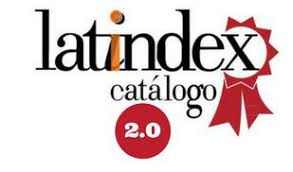Prevalencia del síndrome de dolor miofascial en adultos y su relación con el nivel de estrés, edad y sexo de los pacientes
DOI:
https://doi.org/10.31984/oactiva.v7i3.790Palabras clave:
Dolor Miofascial, Estrés, Edad, Prevalencia, SexoResumen
El síndrome de dolor miofascial es un trastorno de los músculos masticatorios, pueden causar dificultad de apertura bucal y limitaciones en la función masticatoria. Objetivo: determinar la prevalencia del dolor miofascial en pacientes de la Clínica de la Facultad de Odontología de la Universidad de Cuenca y su relación con factores tales como: estrés, edad y sexo. Materiales y métodos: para el cálculo del tamaño de la muestra se consideró las siguientes variables: población infinita, nivel de confianza del 95%, margen de error del 3%, probabilidad de éxito del 25%, dando un total de pacientes investigados de 321 en edades desde los 18 años. El síndrome de dolor miofascial se identificó por observación clínica. Para definir el estrés se utilizó el test de Hamilton (HDRS), la correlación del síndrome de dolor miofascial con factores asociados se empleó un modelo econométrico de regresión múltiple y se corroboró los resultados con el estadístico chi cuadrado con intervalos de confianza del 95%. Resultados: el 45,5% de pacientes presentaron prevalencia de dolor miofascial, de esto el 44,9% fueron mujeres, se evidenció que la variable del nivel de estrés y el sexo del paciente tienen una correlación positiva de dependencia bilateral respecto a la presencia de dolor miofascial, en contraste la edad no está asociada con la presencia de este trastorno, finalmente el modelo econométrico da cuenta de un R cuadrado positivo de la bondad del ajuste del 79,5% de las variables investigadas sexo, estrés y edad. Conclusiones: las personas de sexo masculino tienden a presentar 0,02 veces menos el nivel de dolor en comparación con las mujeres aplicando la escala visual (EVA), se tendría que un incremento de una unidad de estrés del test de Hamilton provocará que el nivel de dolor se incremente en 0,04 veces más en la escala (EVA).
Descargas
Citas
Peck CC, Goulet JP, Lobbezoo F, Schiffman EL,
Alster-Gren P, Anderson GC, et al. Expanding the
taxonomy of the diagnostic criteria for temporomandibular
disorders. Journal of Oral Rehabilitation. 2014;:
p. 2-23.Disponible en: https://doi.org/10.1111/-
joor.12132
Cairns BE. Pathophysiology of TMD pain – basic
mechanisms and their implications for pharmacotherapy.
Journal of Oral Rehabilitation. 2010;(37): p.
-410. Disponible en:https://doi.org/
1111/j.1365-2842.2010.02074.x
Tjakkes GHE, Reinders JJ, Tenvergert EM, Stegenga.
B. TMD pain: The effect on health related quality of life
and the influence of pain duration. Health and Quality
of Life Outcomes. 2010; 8: p. 1-8. Doi:
1186/1477-7525-8-46
Daneri MF. Biología del Comportamiento. Disponible
en: https://www.psi.uba.ar/academica/carrerasdegrad
o / p s i c o l o g i a / -sitios_catedras/electivas/090_comportamiento/material
/tp_estres.pdf
Nadendla LK, Meduri V, Paramkusam G, Pachava KR.
Evaluation of Salivary Cortisol and Anxiety Levels in
Miofascial Pain Dysfunction Syndrome. The Korean
Journal of Pain. 2014; 27(1): p. 30-34. Disponible en:
https://doi.org/10.3344/kjp.2014.27.1.30
Doepel M, Soderling E, Ekberg E, Nilner M, Bell. YL.
Salivary Cortisol and IgA levels in Patients with
Myofascial Pain Treated with Occlusal Appliances in
the short term. Journal of Oral Rehabilitation. 2009; 36:
p. 210 - 216. Disponible en: https://doi.org/
1111/j.1365-2842.2008.01923.x
Barraza CR, Janco S, Villanueva J, Araya I, Hans
Cheistoph L. A Systematic Review and Meta-analysis
of Visual Treatment Versus Psychosocial Interventions
in the Treatment of Myofascial Temporomandibular
Disorder Pain. Journal of Oral and Facial Pain and
Heache. 2014; 28(3): p. 205 - 222. Doi: 10.11607/ofph.
Manfredini D, Nardini LG, Winocur E, Piccotti F,
Ahlberg J, Lobbezoo F. Research diagnostic criteria for
temporomandibular disorders: a systematic review of
axis I epidemiologic findings. Oral Surg Oral Med Oral
Pathol Oral Radiol Endod. 2011; 112: p. 453-462. Doi:
1016/j.tripleo.2011.04.021
Malhotra N. Investigacion de Mercados Mexico:
Pearson; 2008. Disponible en: http://www.elmayorportaldegerencia.
com/Libros/Mercadeo/%5BPD%
D%20Libros%20-%20Investigacion%20de%20M
ercados.pdf
H&Medice. slideshare. [Online]; 2017. Disponible en:
https://www.slideshare.net/martthaleemuss/test-de-hamilton-ansiedad-estres-y-depresion.
Schiffman E, Ohrbach R, Truelove E, Look J, Anderson
G, Goulet JP, et al. Diagnostic Criteria for Temporomandibular Disorders (DC/TMD) for Clinical and
Research Applications: Recommendations of the
International RDC/TMD Consortium NEtwork* and
Orofacial Pain Special Interest Group. Journal of Oral & Facial Pain and Headache. 2014; 28(1): p. 6-27. Doi:
11607/jop.1151
Inform INFOPaRDM. Inform, International Network
For Orofascial Pain and Relater Disorders Methodology.
[Online]; 2020. Disponible en: https://ubwp.buffalo.
edu/rdc-tmdinternational/tmd-assessmentdiagnosis/
dc-tmd/.
Skootsky SA, Jaeger B, Oye RK. Prevalence of
Myofascial Pain in General Internal Medicine Practice.
The Western Journal of Medicine. 1989;: p. 157-160.
Disponible en: https://www.ncbi.nlm.nih.gov/pmc/articles/
PMC1026905/
Ayestarán MA, Gea LB, Arruabarrena EC, Gordon AB.
Guía de Práctica Clínica Sobre Cuidados Paliativos. En.
España; 2008. p. 223-224. Disponible en:
https://www.osakidetza.euskadi.eus/contenidos/inform
a c i o n / o s -k_publicaciones/eu_argital/adjuntos/lehen/cuidadosPal
iativos.pdf
Svensson P, Nielsen LA. Effects of 5 Days of Repeated
Submaximal Clenching on Masticatory Muscle Pain
And Tenderness. Journal of Orofascial Pain. 1996;
(4): p. 330 - 338. Disponible en: http://www.quintpub.
com/userhome/jop/jop_10_4_svensson_6.pdf
Nifosi F, Violato E, Pavan C, Sigari L, Novello G,
Nardini LG, et al. Psychopathology and clinical features
in an italian sample of patients with myofascial and
temporomandibular joint pain: Preliminary Data.
Journal Psychiatry in Medicine. 2007; 37(3): p. 283 -
Disponible en: https://doi.org/10.2190/PM.37.3.f
Le Resche L, Mancl L, Sherman JJ, Gandara B, Dworkin
SF. Changes in temporomandibular pain and other
symptoms across the menstrual cycle. International
Association for the Study of Pain. 2003; 106: p.
-261. Doi: 10.1016/j.pain.2003.06.001
Shen YF, Younger J, Goddard G, Mackey S. Randomized
Clinical Trial of Acupuncture for Myofascial Pain
of the Jaw Muscles. Journal of Orofacial Pain. 2009;
(4): p. 353-359. Disponible en: https://www.ncbi.nlm.
nih.gov/pmc/articles/PMC2894813/
Damodar G, Dawn P. Econometría México: Mc Graw
Hill; 2009. Disponible en: https://fvela.files.word
p r e s s . c o m / 2 0 1 2 / 1 0 / e c o n o m e t r i a - d a m o -dar-n-gujarati-5ta-ed.pdf
Wahlund K, List T, Larsson B. Treatment of temporomandibular disorders among adolescents: a comparison between occlusal appliance, relaxation training, and brief information. Acta Odontol Scand. 2008; 61: p.
-211. Disponible en: https://doi.org/
1080/00016350310003891
Schmitter M, Keller L, Giannakopoulos N, Rammelsberg
P. Chronic Stress in Myofascial Pain Patients. Clin
Oral Invest. 2010; 14: p. 593-597. Doi: 10.1007/s00784-009-0330-0
Pasinato F, Souza JA, Corrêa ECR, Silva AMTd.
Temporomandibular disorder and generalized joint
hypermobility: application of diagnostic criteria. Brazilian
Journal of Otorhinolaryngology. 2011; 77(4): p.
-425. Disponible en: https://doi.org/
1590/S1808-86942011000400003
Christidi N, Doepel M, Ekberg EC, Ernberg M, Le Bell
Y, Nilner M. Effectiveness of a Prefabricated Occlusal
Appliance in Pacients with Temporomandibular Joint
Pain: A Ramdomised Controlled Multicenter Study.
Journal of Oral & Facial Pain and Headache. 2014;
(2): p. 128-137. Doi: 10.11607/ofph.1216
Branco RS, Branco CS, Tesch RdS, Rapoport. A.
Frequencia de relatos de parafuncoes nos subgrupos
diagnosticos de DTM de acordo com os criterios
diagnosticos para pesquisa em disfungoes temporomandibuiares (RDC/TMD). R Dental Press Ortodon Ortop Facial. 2008; 13(2): p. 61-69. Disponible en: https://-
doi.org/10.1590/S1415-54192008000200008
Ferreira FM, Simamoto. Júnior PC, Novais VR, Tavares
M, Neto AJF. Correlation between temporomandibular
disorders, occlusal factors and oral parafunction in
undergraduate students. Brazil Journal of Oral Science.
; 13(4): p. 281-287. Disponible en: https://doi.org/
1590/1677-3225v13n4a08
Özcan NÇ, Özcan F. The relationship of temporomandibular disorders with headaches: a retrospective analysis. Klinik Çalisma - Clinical Trials. 2011; 23(1): p.13-17. Doi: 10.5505/agri.2011.48615
De Tommaso M. Pain Perception During Menstrual
Cycle. Current Pain and Headache Reports. 2011; 15: p.
-406. Doi: 10.1007/s11916-011-0207-1
De Freitas RFCP, Ferreira MAF, Barbosa GAS, Calderon
PS. Counselling and self-management therapies for
temporomandibular disorders: a systematic review.
Journal of Oral Rehabilitation. 2013; 40: p. 864-874.
Disponible en: https://doi.org/10.1111/joor.12098
Khan M, Khan A, Hussain U. Prevalence Of Temporomandibular Dysfunction (Tmd) Among University p. 382-385. Disponible en: http://podj.com.pk/archive/
Sep_2015/PODJ-8.pdf
Vedolin GM, Lobato VV, Conti PCR, Lauris. JRP. The
impact of stress ans anxiety on the pressure pain threshold
of myofascial pain patients. Journal of Oral Rehabilitation.
; 36: p. 313-321. Disponible en: https://-
doi.org/10.1111/j.1365-2842.2008.01932.x
Vojdani M, Bahrani F, Ghadiri P. The study of relationship between reported temporomandibular symptoms and clinical dysfunction index among university
students in Shiraz. Dental Research Journal. 2012; 9(2):
p. 221-225. Doi: 10.4103/1735-3327.95240
Boggero IA, Ramirez MR, Leeuw Rd, Carlson CR.
Satisfaction with Life in Orofacial Pain Disorders:
Associations and Theorical Implications. Journal of
Oral &FAcial Pain and Haedache. 2016; 30: p. 99-106.
Doi: 10.11607/ofph.1526
Descargas
Publicado
- Resumen 796
- DESCARGAR EN PDF 589
- HTML 83
Cómo citar
Número
Sección
Licencia
Derechos de autor 2022 Odontología Activa Revista Científica

Esta obra está bajo una licencia internacional Creative Commons Atribución-NoComercial-CompartirIgual 4.0.
Se autoriza la reproducción total y parcial, y la citación del material que aparece en la revista, siempre y cuando se indique de manera explícita: nombre de la revista, nombre del autor(es), año, volumen, número y páginas del artículo fuente. Las ideas y afirmaciones consignadas por los autores están bajo su responsabilidad y no interpretan necesariamente las opiniones y políticas del Consejo Editorial de la Revista OActiva ni de la Universidad Católica de Cuenca.
La Revista OActiva utiliza la Licencia Creative Commons de Reconocimeinto-NoComercial-CompartirIgual 4.0, que es la siguiente: CC BY-NC-SA 4.0 Internacional.











